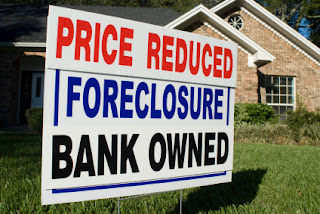With lender credit to commercial property remaining shy and sluggish years after the housing bubble, it’s more important than ever to be aware of investment capital options for commercial property transaction finance. The act of raising capital by the offering of securities for such transactions or projects is highly regulated and rightly so, but changes are afoot in key regulations and might provide ways forward for property deals that would otherwise be held up for lack of access to capital markets.
What is Rule 506?
Under the Securities Act of 1933, any offer to sell securities in the US must either be registered with the United States Securities and Exchange Commission (SEC) or meet certain qualifications to exempt them from such registration. These exemptions for registration requirements are described in SEC Regulation D, or “Reg D”. Some companies are allowed under Reg D to sell securities without having to register the offering with the SEC, which can make access to capital markets a possibility for companies not able to bear the costs of SEC registration.
A reading of the Reg D text spells out what the purpose behind the regulations are – to ensure, among other things, that offers to sell securities are limited to investors meeting certain criteria of “sophistication” and “wealth” and “accreditation”. These and other key terms have specific meanings in the regulations and need to be very well-understood before offers of securities are made. Further, such offerings have been historically prohibited from being “general solicitations” announced with “general advertising”. It’s these prohibitions concerning communications and solicitations that are changing.
The JOBS Act Relaxes Regulations For The First Time In 80 Years
On April 5th, 2012, President Obama signed into law the Jumpstart Our Business Startups (JOBS) Act, which is the first relaxation in Reg D in its over eighty years as a law. In response, SEC has proposed amendments to offerings under Rule 506 that include:
To implement Section 201(a) of the JOBS Act,
we are proposing to amend Rule 506 to provide that the
prohibition against general solicitation contained in Rule 502(c)
shall not apply to offers and sales of securities
made pursuant to Rule 506, as amended, provided that all purchasers of
the securities are accredited investors and the issuer takes
reasonable steps to verify that the purchasers are
accredited investors. In addition, we are proposing to amend
Form D, which is a
notice required to be filed with the Commission by each issuer
claiming a Regulation D exemption, to add a check box to indicate
whether an offering is being conducted pursuant to the proposed
amendment to Rule 506 that would permit general
solicitation.
[DISCLAIMER: Reprinted from "The Source" - This article is not to be construed as legal advice! Obtain experienced securities counsel before using any technique regulated hereunder.]





 Having
survived a hot summer, you’re probably looking
forward to cooler days. But winter can also be a real drain on your
energy dollars if you’re not careful. So as you soak up the pleasures of
autumn, take a few moments to prepare your home for the inevitable
visit from Old Man Winter. Follow these guidelines so you can hang on to
more of those hard-earned dollars.
Having
survived a hot summer, you’re probably looking
forward to cooler days. But winter can also be a real drain on your
energy dollars if you’re not careful. So as you soak up the pleasures of
autumn, take a few moments to prepare your home for the inevitable
visit from Old Man Winter. Follow these guidelines so you can hang on to
more of those hard-earned dollars.










